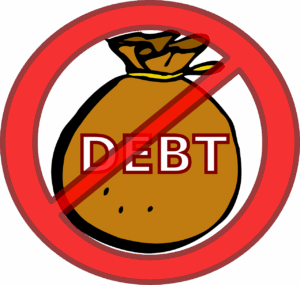Tax Strategies and Retirement Accounts

Tax Strategies & Retirement Accounts
Make Your Money Work Harder Than You Do
Track #8 of the Rock-n-Roll Financial Literacy Series for Gen X
Featured Song: “Keep Your Eye on the Money” – Mötley Crüe
Let’s Talk About Taxes (Without the Trauma). If you are Gen X, you are likely in your peak earning years—and that means taxes are hitting hard. But here is the good news: You do not have to accept tax drag as your financial fate. With the right strategies, you can grow your retirement savings accounts while minimizing what you owe Uncle Sam. This post is your backstage pass to tax-smart retirement planning—no jargon, no judgment, just strategy.
Why Tax Strategy Matters More for Gen X
We are juggling:
- College costs for kids
- Aging parents
- Mortgage payments
- Career pivots
- Catch-up retirement savings
And we are doing it while navigating one of the most complex tax landscapes in history.
However, Smart tax moves now = more freedom later.
Retirement Accounts: What Gen X Needs to Know
Let’s break down the key players:
Retirement Account: Traditional 401(k)
A traditional 401(k) is an employer-sponsored retirement savings plan that allows employees to contribute pre-tax dollars from their paychecks, which reduces their taxable income in the present. These contributions and their earnings grow tax-deferred, meaning you do not pay taxes until you withdraw the money, typically in retirement. Employers may also contribute to your account, and invest the funds in a selection of options chosen by the employer.
Key Characteristics
- Pre-Tax Contributions: Employers deduct your contributions from your gross income sometimes before they calculate state income taxes. This immediate tax break lowers your current taxable income.
- Tax-Deferred Growth: The IRS does not tax money in your account, including investment earnings, until you withdraw it.
- Withdrawal Taxes: When you take money out of the account in retirement, both your contributions and the earnings are subject to ordinary income tax.
- Employer Match: Your employer may contribute to your 401(k) by matching some of your contributions or making contributions on your behalf.
- Investment Options: The plan offers a selection of investment options, such as mutual funds, for your money to grow.
- Eligibility: To participate, you must be an eligible employee, as determined by your employer’s plan rules.
- Withdrawal Rules: You generally pay taxes on withdrawals, and the IRS requires minimum withdrawals to begin at age 73.
In short:
- Pre-tax contributions lower your taxable income
- Grows tax-deferred
- Taxes due when you withdraw
- Employer match = free money
Retirement Account: Roth 401(k)
Roth 401(k) is an employer-sponsored retirement plan where you contribute after-tax money, allowing your investments to grow. Qualified withdrawals in retirement will be completely tax-free. While traditional 401(k) contributions reduce your current taxable income, Roth 401(k) contributions do not. You exchange this upfront tax payment for tax-free growth and tax-free distributions in the future.
Key Features
- After-Tax Contributions: You pay income tax on the money you contribute to a Roth 401(k) in the year of the contribution.
- Tax-Free Withdrawals: Once you hold the account for at least five years and you meet certain criteria (like reaching age 59½), you can take qualified distributions, including all your earnings, without paying any federal income tax.
- Employer-Sponsored: Like a traditional 401(k), employers offer a Roth 401(k) and they limit you to the investment options they provide.
- Contribution Limits: Both Roth and traditional 401(k) plans share the same annual contribution limits.
- No Income Limits
In short:
- Contributions are after-tax
- Grows tax-free
- Withdrawals in retirement are tax-free
- No income limits to contribute
How it Differs from a Traditional 401(k)
- Tax Timing:
- Traditional 401(k): Contributions are pre-tax, reducing your current taxable income. The IRS does tax withdrawals in retirement.
- Roth 401(k): Contributions are after-tax, so they don’t lower your current taxable income, but withdrawals are tax-free.
- Investment Growth:
- Traditional 401(k): Growth is tax-deferred.
- Roth 401(k): Growth is tax-free.
A Roth 401(k) is often a good option for:
- Lower-income individuals: who expect to be in a higher tax bracket during retirement.
- Individuals who prefer certainty: that their future retirement income will be tax-free, regardless of future tax rates.
Retirement Account: Traditional IRA
A Traditional IRA (Individual Retirement Arrangement) is a retirement savings plan with tax benefits, where your contributions may be tax-deductible in the year you make them, reducing your taxable income. The money grows tax-deferred, meaning you don’t pay taxes on the earnings each year. However, you pay ordinary income tax on withdrawals in retirement. You generally must begin taking required minimum distributions (RMDs) by age 73.
How it works
- Contributions: You contribute pre-tax money to the account.
- Tax-Deductibility: Depending on your income and filing status, your contributions may be deductible, lowering your current tax bill.
- Tax-Deferred Growth: Your investments grow without the IRS taxing them annually.
- Retirement Withdrawals: When you withdraw the money in retirement, the IRS taxes both the deductible contributions and the earnings as ordinary income.
- Early Withdrawal Penalty: If you withdraw funds before age 59½, you may face an additional 10% early withdrawal penalty on top of the income tax.
Key Features
- Tax Deduction: Potential reduction of your taxable income in the year of the contribution.
- Tax-Deferred Growth: Investments grow without being taxed annually.
- Required Minimum Distributions (RMDs): You must start taking withdrawals at a certain age, currently age 73, with the IRS providing specific rules.
- Contribution Limits: The IRS sets annual contribution limits. For 2025, this limit is $7,000 (plus an additional $1,000 if you are age 50 or older).
- No Income Limit for Contribution: You can contribute to a Traditional IRA regardless of your income.
- Spousal Ira: If married, you can contribute to an IRA for your non-working or low-earning spouse, if you file a joint tax return.
In short:
- Contributions may be tax-deductible
- Grows tax-deferred
- Taxes due on withdrawals
- Income limits apply for deduction eligibility
Retirement Account: Roth IRA
A Roth IRA is a retirement savings account that you contribute taxed money (after-tax dollars), and in return, your investments grow tax-free, with all qualified withdrawals in retirement also tax-free. Unlike a traditional IRA, there are income limitations to contributing to a Roth IRA, and you don’t have to take mandatory withdrawals (Required Minimum Distributions) from it during your lifetime. It is often a good choice for younger individuals who expect their tax rate to be higher in the future.
Key Features of a Roth IRA
- After Tax Contributions: You contribute money that the IRS has already taxed, so there are no immediate tax benefits.
- Tax-Free Growth: Your investments within the account grow without being taxed.
- Tax-Free Qualified Withdrawals: In retirement, you can withdraw both your contributions and earnings without paying federal income tax, provided you meet certain conditions.
- No Required Minimum Distributions (RMDs): The IRS does not require you to start taking money out of your Roth IRA at a certain age, which offers more flexibility in retirement planning.
- Income Limitations: There are income caps for who can contribute to a Roth IRA, which can limit the amount you are able to contribute.
- Early Withdrawal Flexibility: You can withdraw your contributions at any time, for any reason, without taxes or penalties.
When a Roth IRA is a Good Choice
- Expect Higher Future Taxes: If you believe you are in a lower tax bracket now than you will be in retirement, a Roth IRA’s tax-free withdrawals can be a significant advantage.
- Early in Your Career: Younger individuals with a longer time horizon for their investments to grow, and who are not yet in their peak earning years, can benefit from a Roth IRA.
- Desire for Tax-Free Income in Retirement: If you want to have a portion of your retirement income completely tax-free, a Roth IRA provides this benefit.
In short:
- Contributions are after-tax
- Grows tax-free
- No taxes on qualified withdrawals
- No required minimum distributions (RMDs)
- Income limits apply (phases out at $146K–$161K for single filers in 2024)
Backdoor Roth IRA: The Gen X Loophole
A “backdoor Roth” is a legal tax strategy that allows high-income earners, who are otherwise unable to contribute directly to a Roth IRA, to contribute to one. It involves making non-deductible, after-tax contributions to a Traditional IRA and then immediately converting those funds into a Roth IRA. This process allows you to accumulate tax-free money in the Roth IRA over time.
If your income is too high to contribute directly to a Roth IRA, you can still get in through the back door.
How It Works:
- Contribute to a Traditional IRA (non-deductible)
- Convert it to a Roth IRA
- Pay taxes on any gains—but future growth is tax-free
Watch Out For:
- The pro-rata rule (you may owe taxes on existing IRA balances)
- Timing matters—consult a tax pro if you are unsure
Here are 6 practical strategies that can help reduce the amount of taxes you owe:
1. Consider tax-efficient investments
There are many factors to consider when picking investments for your portfolio. When it comes to your nonretirement accounts, choose investments with built-in tax efficiencies, such as index funds. Include certain mutual funds and ETFs (exchange-traded funds). That is one way to minimize the tax drag on your returns.
2. Reduce your taxable income with a health savings account (HSA)
One way to minimize the taxes you pay at the end of the year is to put some of your income into an HSA, a tax-advantaged savings account that lets you set aside money on a pre-tax basis to pay for qualified medical expenses. Money you deposit in the current year that you do not use for qualified expenses remains in the account for future tax-free medical withdrawals. Once you turn 65, you can take penalty-free—but not tax-free—distributions for any reason. If you enroll in a high-deductible health plan, you are eligible to open an HSA.
3. Divide assets among accounts with asset location
Picking tax‑efficient investments is one method to maximize after-tax returns, but you also want to choose the right types of accounts to hold your investments.
At the highest level, asset location is a way to maximize after-tax returns by dividing your assets among taxable and tax-deferred accounts. You can put tax-efficient investments into taxable accounts and investments with a heavier tax burden into tax-advantaged accounts. This strategy can reduce your tax bill and boost your returns.
4. Look for opportunities to offset gains
As an investor, the IRS taxes you on net capital gains—the amount you gained minus any investment losses—so any realized losses can help lower your tax bill. Tax-loss harvesting is the intentional selling of investments at a loss to lower taxes
5. Take a tax-efficient approach to withdrawals
When you start taking money out of your portfolio, make sure your withdrawal strategy factors in taxes. Once you start drawing down from your nonretirement accounts, think about taking all income produced from your investments (dividends, interest, and capital gains) and moving it to a money market account—rather than reinvesting it—so you don’t end up paying taxes twice.
6. Maximize charitable giving
When you meet certain rules (for example, you are at least 70½ when making the gift and you pay the check directly to the qualified charity), then the charitable contribution is not taxable income.
Tools That Do Not Suck
Here are a few Gen X-friendly platforms to help you plan:
- Fidelity – Great for Roth IRAs and retirement calculators
- Vanguard – Low fees, strong tax-efficient fund options
- SmartAsset – Personalized tax strategy tools
- Gen X Money Checkup – Includes a retirement and tax planning worksheet
Get the Gen X Money Checkup here if you have not already.
Quick Wins to Get Tax-Smart
- Increase your Roth 401(k) contributions
- Open a Roth IRA (or use the backdoor strategy)
- Use tax-loss harvesting to offset gains
- Rebalance your portfolio with asset location in mind
- Max out catch-up contributions if you are 50+
Let’s Talk About It
Drop me a line and tell me:
- What is your biggest tax frustration?
- What is one strategy that worked for you?
- What is your favorite retirement account—and why?
Let’s swap stories, bust myths, and build something better—together.
Final Encore: Tax Strategy Is a Power Move
Gen X does not need another lecture. We need clarity and control. We need tax-smart strategies that work for our lives—not against them. Grab your checkup. Reroute your contributions. And start building a retirement plan that keeps more of your money in your pocket.
Because retirement is not an age—it is an era.
And Gen X? We are ready to make it slap.
Bonus Track: Money Moves Playlist
This week’s vibe:
“Keep Your Eye on the Money” – Mötley Crüe
Because tax strategy is about focus, finesse, and keeping what you earn.
Until next time, remember
You don’t know what you got ‘til it’s gone.
Tia
**Usually, I ask you to leave a comment for me after a post. Due to, probably, my technological illiteracy, I have been unable to access the comments you post. If I have not responded to one of your comments, this is why and I apologize. Until I resolve this issue, please email your comments to me at retirementrockstars66@gmail.com. I REALLY would love to hear from you. And I will respond.
Do not forget your Money Checkup!
$5.00 Off Introductory Offer!!






https://shorturl.fm/EHVL0
https://shorturl.fm/FsRYZ
https://shorturl.fm/I5nCn
https://shorturl.fm/HNp6J
https://shorturl.fm/9lJew
https://shorturl.fm/pcNJN
https://shorturl.fm/kzAAG